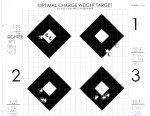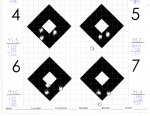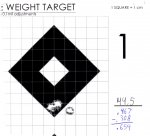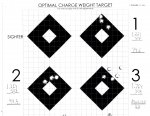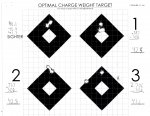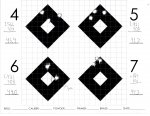I know I should probably just contract Dan Newberry to help me out but I just wanted to ask everyone's opinion of which load I should go with:
Rifle:
Tac Coord FN SPR in .308 Win
Bushnell XRS 4.5-30
Ammo:
Sierra 175gr SMK
Lake City LR 11 Brass
IMR4064
Winchester #9 1/2 Primers
Loaded to 2.8 OAL
Target was at 100 yards.
My initial thought was that I had nodes at 43.5 and 44.0 because of how similar the groups looked. Looking at the specs again though I think my nodes are actually at 42.8 and 43.5, meaning my OCW would be in between those at 43.1. How far off is my thinking?
Unless of course i'm misunderstanding how to analyze the targets.....
Rifle:
Tac Coord FN SPR in .308 Win
Bushnell XRS 4.5-30
Ammo:
Sierra 175gr SMK
Lake City LR 11 Brass
IMR4064
Winchester #9 1/2 Primers
Loaded to 2.8 OAL
Target was at 100 yards.
My initial thought was that I had nodes at 43.5 and 44.0 because of how similar the groups looked. Looking at the specs again though I think my nodes are actually at 42.8 and 43.5, meaning my OCW would be in between those at 43.1. How far off is my thinking?
Unless of course i'm misunderstanding how to analyze the targets.....

